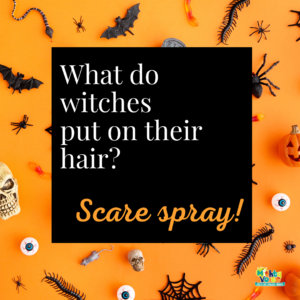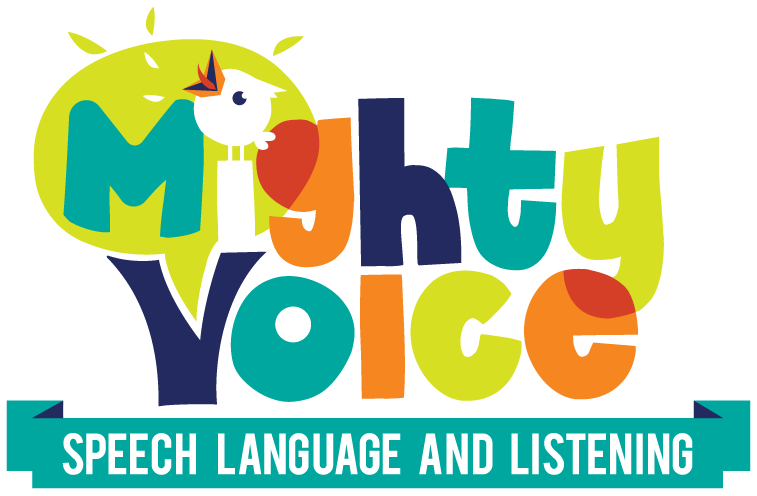
Even if you didn’t really laugh at that joke, you probably smiled just a little bit, right? Which is one of my favorite reasons to use jokes in therapy–it’s fun! And if I’m having fun in therapy, my students are likely to be having fun too.
But, jokes are great for so many reasons. I’ve written before about why we need to be teaching figurative language to our students who are deaf and hard of hearing and jokes are such a great way to do that.
Here are some of the things we can work on while using jokes:
DIP (Duration, Intensity, and Pitch)
Remember those suprasegmentals? Jokes are a perfect way to work on those with older kids. Think about the witch joke…which words do you elongate? Where does your pitch rise or fall? Which word or words are more intense? This one question and answer gives you opportunity to work on it all.
Phonemic and Phonological Awareness
In the witch joke, part of what makes it funny is that “scare spray” sounds very similar to “hair spray.” This similarity gives you an opportunity to target initial sounds, rhymes, and more. You can focus both on how they sound different and how they look different.
Vocabulary and Language
In order to understand the punchline of “scare spray,” kids first have to understand what a witch is, what it means to scare someone, and what hair spray is and why someone would put it on their hair. When we take a bird’s eye view, that’s actually a lot of vocabulary and language concepts packed into a simple Halloween joke, isn’t it? Teaching kids explicitly about what makes jokes funny, like double meaning words, helps them access the humor.
Conversation and Social Skills
Once you’ve talked about everything else, having your student work up to telling a joke to others is a great way to focus on conversation and social skills. You can have them learn and practice the joke in the safety of a therapy session, and then work on the skills needed for them to share their joke with others. They’ll need to learn how to ask if someone wants to hear a joke, actually tell the joke, and then perhaps help explain it to their listener. Those are some great opportunities to work on some of the nonverbals and social skills we want all of our kids to be comfortable with.
Writing Skills
If you want to extend it to writing skills, you can have students create their own jokes. This really takes some higher level thinking and language skills, as they consider what might make a joke funny. Is it going to be a multiple meaning word? The duration, intensity, and pitch at which the joke is delivered?
